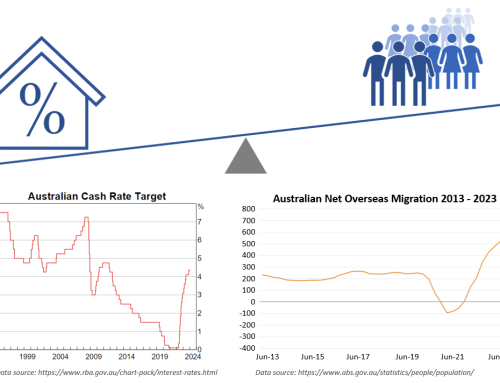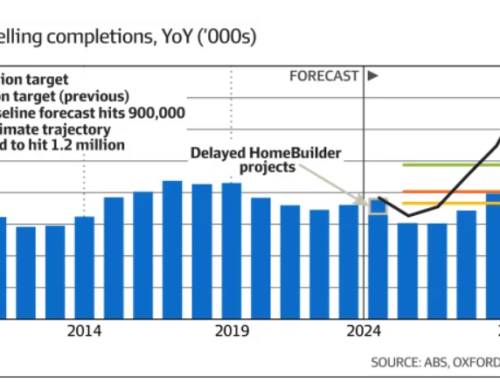Spotting the iceberg: three ways business owners can detect disruption early to avoid a collision
 In the early hours of April 15th, 1912, the RMS Titanic hit an iceberg and sank to the bottom of the North Atlantic Ocean. It was a state of the art craft, “the unsinkable ship” and yet 1,522 lives were lost. While there were many factors contributing to this tragedy, none are so poignant as this: the whole thing would have been avoided but for a pair of binoculars. Surviving witnesses assured the official inquiry that had the key for the locker which held the binoculars not been misplaced, the crew would have spotted the iceberg in time to steer the ship away from harm.
In the early hours of April 15th, 1912, the RMS Titanic hit an iceberg and sank to the bottom of the North Atlantic Ocean. It was a state of the art craft, “the unsinkable ship” and yet 1,522 lives were lost. While there were many factors contributing to this tragedy, none are so poignant as this: the whole thing would have been avoided but for a pair of binoculars. Surviving witnesses assured the official inquiry that had the key for the locker which held the binoculars not been misplaced, the crew would have spotted the iceberg in time to steer the ship away from harm.
To protect your small business from disruption, you will need to be responsive and flexible, adapting your business model quickly to hold onto your market share. But will this be enough? Probably not. Business owners must be scanning the horizon for that ‘tip of the iceberg’; those first hints of disruption. The business environment is changing fast and you will need to add ‘disruption detector’ to your entrepreneur skillset in order to thrive, not just survive.
Timing is everything
The earlier you can detect the signs of disruption, the better your small business will be able to embrace change and even leverage the opportunity and become a market leader. But how do you know what to look for? I mentor my Tenfold small business coaching clients to monitor their industry for these three changes:
- Disintermediation
Disintermediation is the primary form of disruption and can affect almost any industry. Cutting out the middle-men is not a new concept, but the speed and frequency of changes within supply chain and business systems is astonishing.Take the example of what happened to bricks and mortar stores with the advent of online shopping. Amazon.com started out providing Borders bookstores with an online distribution option, but soon stole their customer base altogether. Once customers experienced shopping with Amazon they overcame their trust issues and no number of beanbags and coffee stands could save the shopping mall bookstore. The convenience of home delivery and a lower price-point won out in the end.Borders simply took too long to respond and missed a great opportunity. They should have made the move to online a LOT sooner and perhaps even created a differentiated e-reader. Instead they kept opening stores and sunk further into debt.Bottom line: any time you hear of a competitor or a newcomer in your industry who is shrinking the space between producers and consumers, sit up and take notice. - Simplification
Disruption is all about making things easier for the consumer, which is why it is so effective. Therefore, your ability to spot disruption will also depend on your ability to spot both existing and potential customer problems that you can solve through simplification.The founder of Airtasker, Tim Fung, disrupted the ‘gig economy’ in Australia when he set up his website that connects people who need a small job done with skilled people willing to do the work. His users, on both sides of the equation, previously had to go to a lot of effort to find each other. Placing ads on pin boards at the local shops, Gumtree, Trading Post, local papers or just putting the word out on the grapevine was far from efficient or reliable.What Airtasker has done is take the work and a lot of the risk out of the transaction. Those who need assistance can post an ad for their gig and within minutes, a member from the pool can ‘apply’. In addition to accessing better qualified candidates, Airtasker is now offering some level of protection for gig workers in the form of insurances and has been working with unions to create a dispute resolution process that involves the Fair Work Commission.Bottom line: Look out for players who are changing the game by making it easier for customers to buy.
- Communication
Communication technology has resulted in businesses interacting more directly, authentically and responsively with existing customers. There are also increased opportunities to more easily identify and connect with new customers. Staying up to date with these changes can feel like a constant battle; it seems that new communication channels arrive on the scene almost daily.It is worth persisting. Businesses who keep their finger on the pulse of communication technology not only have the benefit of keeping up with their competitors, they have the chance to be one of the first to realise how to apply new tech to improve their business operations and customer experience.Consider the impact of business Facebook pages. Before social media you were still largely talking ‘at’ your customers; even your website likely produced very little feedback. All you really had were sales figures to rely on. Then along came Facebook. It was a social revolution, connecting people with their social network all over the world. Somewhere a business owner spotted the disruption and made a page for their business. They saw an opportunity to start a conversation with their customers that allowed them to talk back.Now, social media presents businesses with a goldmine of customer insights. All those comments, messages, likes, reviews… they are all handing you the information you need to put the customer at the centre of your operation and truly bring them the products and services that they want to buy.Bottom line: Stay on top of emerging communication channels and technology and view it through a business lens… how might you use it to talk to your customers in a new way?
Who will be next?
There are industries where disruption is imminent…
Real Estate
The Real Estate business is one industry that is truly ripe for disruption. It is not hard to imagine someone setting up an app that matches people with property and cuts out the Real Estate Agent altogether. Here you can easily spot the disintermediation, simplification and communication changes that will see these middle-men scramble to adapt the whole model as soon as possible.
Business financing
Starting up a small project has never been so easy to fund. Crowdfunding has evolved into websites like kickstarter.com, which links people who need a relatively small amount of cash to fund a creative project (everything from tech and design through to publishing and film) with people who are interested in investing by pre-purchasing a product and thus funding its production. This cuts out the need for a bank loan or traditional investor completely (disintermediation at work). The success of these types of ventures hints at changes across the wider finance industry with Fintech offering viable and even preferable alternatives to traditional banks.
Any industry experiencing poor customer satisfaction
Disruption places customer pain points at the centre of a business strategy, so any industry where there are low levels of customer satisfaction is likely next on the disruption ‘hit list’. Law, Insurance, Data Security, Sustainable Energy… these industries are opaque to their customers, with their pricing structures and processes often shrouded in mystery. Customers, who are increasingly used to more open communication are increasingly frustrated by these businesses that seem impervious to market forces… I see icebergs on the horizon!
In brief
To harness the innovative benefits of disruption in your industry, you will need to spot it early. Three indicators that may tip you off are advances in the areas of disintermediation, simplification and communication. There is no need to panic; now you know what to look for, you can be ready with those binoculars, scanning the environment for change.





